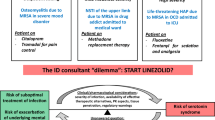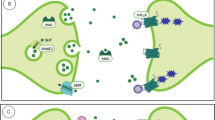Abstract
Background
Serotonin syndrome is a rare and potentially fatal adverse drug reaction caused by serotonergic drugs and is due to an increase in serotonin concentration or activation of the 5-HT receptor in the central nervous system. We analysed adverse events in the US Food and Drug Administration (FDA) Adverse Event Reporting System (FAERS) data set to investigate the main drug classes related to reports of serotonin syndrome and the reporting risk in relation to age and sex.
Methods
We analysed data from the FAERS database to evaluate the main drug classes related to reports of the serotonin syndrome, and the reporting risk in relation to age and sex.
Results
We found 8,997 cases of serotonin syndrome; selective serotonin reuptake inhibitors (SSRIs) was the class of drugs with most reports, followed by opioids and other antidepressants. The highest Reporting Odds Ratios (ROR) for drug classes was for monoamine oxidase (MAO) inhibitors (45.99, 95% confidence interval (CI): 41.21–51.33) and SSRIs (32.66, 95% CI: 31.33–34.04), while the ten active substances with the highest ROR were moclobemide, isocarboxazid, oxitriptane, tranylcypromine, melitracen, phenelzine, linezolid, amoxapine, reboxetine and tryptophan; with values of ROR ranging from 44.19 (95% CI: 25.38–76.94) of tryptophan to 388.36 (95% CI: 314.58-479.46) of moclobemide. The ROR for the most commonly involved drugs was higher in the group of older adults (65 > years old), and higher in males.
Conclusion
Prescribers need to be vigilant about drugs that can raise serotonin concentration or influence serotonergic neurotransmission, also when using drugs with less well-known risk for serotonin syndrome, like linezolid and triptans.
Similar content being viewed by others
Data availability
The data are openly available in the FDA Adverse Event Reporting System Public Dashboard at https://openvigil.sourceforge.net/.
References
Sun-Edelstein C, Tepper SJ, Shapiro RE (2008) Drug-induced serotonin syndrome: a review. Exp Opin Drug Saf 7:587–596. https://doi.org/10.1517/14740338.7.5.587
Buckley NA, Dawson AH, Isbister GK (2014) Serotonin syndrome. BMJ 348:g1626. https://doi.org/10.1136/bmj.g1626
Prakash S, Rathore C, Rana K, Prakash A (2021) Fatal serotonin syndrome: a systematic review of 56 cases in the literature. Clin Toxicol 59:89–100. https://doi.org/10.1080/15563650.2020.1839662
Perananthan V, Buckley NA (2021) Opioids and antidepressants: which combinations to avoid. Australian Prescriber 44. https://doi.org/10.18773/austprescr.2021.004
Rojas-Fernandez CH (2014) Can 5-HT3 antagonists really contribute to serotonin toxicity? A call for clarity and pharmacological law and order. Drugs Real World Outcomes 1:3–5. https://doi.org/10.1007/s40801-014-0004-3
Gillman PK (2010) Triptans, serotonin agonists, and serotonin syndrome (serotonin toxicity): a review. Headache 50:264–272. https://doi.org/10.1111/j.1526-4610.2009.01575.x
Elbarbry F, Moshirian N (2023) Linezolid-associated serotonin toxicity: a systematic review. Eur J Clin Pharmacol 79:875–883. https://doi.org/10.1007/s00228-023-03500-9
Pontes H, Clément M, Rollason V (2014) Safety signal detection: the relevance of literature review. Drug Saf 37:471–479. https://doi.org/10.1007/s40264-014-0180-9
Rothman KJ, Lanes S, Sacks ST (2004) The reporting odds ratio and its advantages over the proportional reporting ratio. Pharmacoepidemiol Drug Saf 13:519–523. https://doi.org/10.1002/pds.1001
Böhm R, Höcker J, Cascorbi I, Herdegen T (2012) OpenVigil–free eyeballs on AERS pharmacovigilance data. Nat Biotechnol 30:137–138. https://doi.org/10.1038/nbt.2113
Böhm R, von Hehn L, Herdegen T et al (2016) OpenVigil FDA - Inspection of U.S. American adverse drug events pharmacovigilance data and novel clinical applications. PLoS ONE 11:e0157753. https://doi.org/10.1371/journal.pone.0157753
Montastruc F, Sommet A, Bondon-Guitton E et al (2012) The importance of drug-drug interactions as a cause of adverse drug reactions: a pharmacovigilance study of serotoninergic reuptake inhibitors in France. Eur J Clin Pharmacol 68:767–775. https://doi.org/10.1007/s00228-011-1156-7
Faillie J-L (2019) Case–non-case studies: Principle, methods, bias and interpretation. Therapies 74:225–232. https://doi.org/10.1016/j.therap.2019.01.006
Poluzzi E, Raschi E, Piccinni C et al (2012) Data mining techniques in pharmacovigilance: Analysis of the publicly accessible fda adverse event reporting system (AERS). In: Data mining applications in engineering and medicine. IntechOpen
Evans SJ, Waller PC, Davis S (2001) Use of proportional reporting ratios (PRRs) for signal generation from spontaneous adverse drug reaction reports. Pharmacoepidemiol Drug Saf 10:483–486. https://doi.org/10.1002/pds.677
Franconi F, Campesi I (2014) Pharmacogenomics, pharmacokinetics and pharmacodynamics: interaction with biological differences between men and women. Br J Pharmacol 171:580–594. https://doi.org/10.1111/bph.12362
Shehab N, Lovegrove MC, Geller AI et al (2016) US Emergency Department visits for outpatient adverse drug events, 2013–2014. JAMA 316:2115–2125. https://doi.org/10.1001/jama.2016.16201
Baldo BA, Rose MA (2020) The anaesthetist, opioid analgesic Drugs, and serotonin toxicity: a mechanistic and clinical review. Br J Anaesth 124:44–62. https://doi.org/10.1016/j.bja.2019.08.010
Noguchi Y, Tachi T, Teramachi H (2021) Detection algorithms and attentive points of safety signal using spontaneous reporting systems as a clinical data source. Brief Bioinform 22:bbab347. https://doi.org/10.1093/bib/bbab347
Acknowledgements
All authors participated in the development of the manuscript and approved its final version. We are grateful to J.D. Baggott for language editing.
Funding
No funding was received for conducting this study.
Author information
Authors and Affiliations
Contributions
All authors participated in the development of the manuscript and approved its final version.
Corresponding author
Ethics declarations
Conflict of interest
The authors have no conflicts of interest directly relevant to the content of this manuscript.
Additional information
Publisher’s Note
Springer Nature remains neutral with regard to jurisdictional claims in published maps and institutional affiliations.
Electronic supplementary material
Below is the link to the electronic supplementary material.
Rights and permissions
Springer Nature or its licensor (e.g. a society or other partner) holds exclusive rights to this article under a publishing agreement with the author(s) or other rightsholder(s); author self-archiving of the accepted manuscript version of this article is solely governed by the terms of such publishing agreement and applicable law.
About this article
Cite this article
Elli, C., Novella, A. & Pasina, L. Serotonin syndrome: A pharmacovigilance comparative study of drugs affecting serotonin levels. Eur J Clin Pharmacol 80, 231–237 (2024). https://doi.org/10.1007/s00228-023-03596-z
Received:
Accepted:
Published:
Issue Date:
DOI: https://doi.org/10.1007/s00228-023-03596-z




